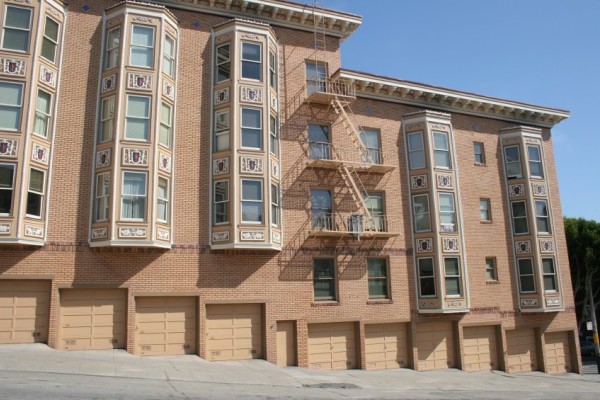The 2023 Annual Energy Benchmark is due May 1, 2024.
The following steps are a guide to completing an Annual Energy Benchmark Summary.
If you have already set up an ENERGY STAR Portfolio Manager account and all data is up to date, please go to Step 5.
Step 1: Create a building profile in PG&E’s Building Benchmarking Portal
Register an account in PG&E’s Building Benchmarking Portal, then log in and add your building.
For more detail, a great resource is: How to Benchmark Your Building Using PG&E’s Building Benchmarking Portal
Resources:
- PG&E Benchmarking homepage (PG&E resource with detailed instructions, FAQ, and contact info for assistance)
- Get Help with Benchmarking
Step 2: Create a building profile in Portfolio Manager
Register in ENERGY STAR Portfolio Manager (Portfolio Manager) and create a profile for your building. To comply you must describe the entire building including common and tenant spaces and include all energy meters (including tenants) and any energy generated on-site.
Step 3: Obtain and input energy data
After preparing a profile of each building in Portfolio Manager, add energy use data. For PG&E customers, PG&E will electronically sync energy data with your Portfolio Manager account for free. This service saves the trouble of entering data by hand, and it is the most convenient way to gather data for both common and tenant meters. To set up PG&E Portfolio Manager Web Services, see: How to Benchmark Your Building Using PG&E's Building Benchmarking Portal (PDF).
Though it is possible to manually input data from utility bills, the automated service is recommended.
If you are a San Francisco Public Utilities Commission (PUC) customer, email energydata@sfwater.org to request energy usage data for benchmarking.
Step 4: Identify your parcel(s)
For each building, add the Assessor Parcel Number (APN – also known as the block/lot number) to Portfolio Manager’s "San Francisco Building ID" field:
- To look up Assessor Parcel Number(s), use the San Francisco Property Information Map
- To add APN(s) to the San Francisco Building ID field in Portfolio Manager:
- Go to the My Portfolio tab and click on the property name.
- In the secondary gray set of tabs, select Details.
- In the second box on the left, Unique Identifiers (IDs), click Edit.
- In the Standard IDs dropdown, select San Francisco Building ID.
- Enter the Assessor Parcel Number(s) in the ID field. For example, the San Francisco Building ID for 1 South Van Ness Ave is: 3506/001.
- If your building has multiple APNs, please enter all of them, separated with a space.
- Click Save.
Step 5: Open the Energy Benchmark Summary template
An Annual Energy Benchmark Summary is required every year; each year you must click a link below that corresponds to the required calendar year.
To Add a Report Template (for the first time) select the report you want to submit:
- This year:
- 2023 Energy Benchmark Summary - Due May 1, 2024
- Past years:
- 2022 Energy Benchmark Summary - Due May 1, 2023
- 2021 Energy Benchmark Summary - Due May 17, 2022
- 2020 Energy Benchmark Summary - Due April 1, 2021
- 2019 Energy Benchmark Summary - Due July 1, 2020
- Login to Portfolio Manager.
To Return to a Report Template you've previously loaded:
- Login to Portfolio Manager .
- From “My Portfolio” click on the "Reporting" tab at the top.
- Find the report that you want to generate, and in the "Action" dropdown, select "Respond to Data Request."
Step 6: Confirm your data is complete and accurate
Generate your report:
- When you complete Step 5, you will land on the "Respond to Data Request" page.
- In the "About Your Response" box, choose whose contact info you want to attach to your submittal for follow-up.
- In the "Your Response" box, you will NOT be able to select the timeframe; that is fixed by the report template.
- Below the timeframe, choose which properties you will release data for.
- Click "Generate Response Preview".
Check your data:
- Once the Response has been generated, on the Portfolio Manager "Reporting" tab the report should be highlighted in green.
- Portfolio Manager has a data quality checker that will alert you if information is not entered correctly or if the report is missing data. If there is an error, an alert box will appear on the Reporting Tab.
- Please review the alerts by clicking “Read More”. You must fix all alerts. Submittals with errors and alerts will trigger follow-up from SF Environment, and delay approval.
- To check in more detail, select "Download Preview in Excel" from the dropdown on the right. In the downloaded file, check to make sure:
- There are no issues in the Energy Alerts or Space Alerts fields.
- Square footage is consistent with your records
- Confirm energy usage data is complete and correct
- San Francisco Building ID contains the Assessor Parcel Number
- Once all alerts have been fixed and you have verified your data, generate an updated response in the Reporting tab.
Step 7: Send data to SF Environment
- From the "Reporting" tab in Portfolio Manager, click the dropdown menu for the report where you have verified all data, and select "Send Response."
- On the following page enter the necessary information and click "E-Sign Response."
- Once you see the green check mark, click "Send Data," then "Continue" in the pop-up.
- You will receive follow-up from SF Environment once we have reviewed your submittal. SF Environment will either indicate your report is complete or identify what is needed.

